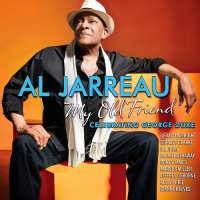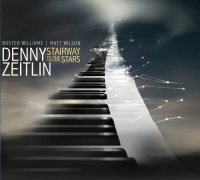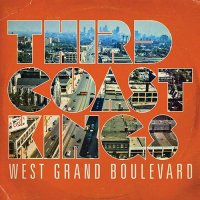![Arve Henriksen "The Nature of Connections" (2014) / jazz Arve Henriksen "The Nature of Connections" (2014) / jazz]()
Новый Arve.
And so, an album with a title like The Nature of Connections has a special meaning for the increasingly in-demand but, more recently, career-focused Henriksen. While he has, over the past two decades, honed a most personal approach to his instrument that sings, at times, with the gentle breath of a shakuhachi and at other times the more assertive stance of an Alpine horn, the majority of his work has, in some way, shape or form, involved the use of electronics, whether it’s live sampling, use of preexisting samples and programs, or the application of effects to his already distinctive sound. The Nature of Connections dispenses with all that—an all-acoustic album where, other than a little bit of piano, he focuses solely on trumpet and piccolo trumpet.
A first for Henriksen, the trumpeter collaborates with four string players of significance and note: violinist Nils Okland, whose whisper-light work on albums like Bris (Rune Grammofon, 2005), Lysøen: Hommage à Ole Bull (ECM, 2011) and, with the 1982 trio, 1982 _BJ Cole (Hubro, 2012), has demonstrated that there is, indeed, a place where Norwegian traditionalism, centuries—spanning classicism and contemporary improvisation can meet; violinist Gjermund Larsen, who may be younger than Økland, but has already carved a name for himself, both as a leader on recordings like Reise (Grappa, 2013) and with the Christian Wallumrød Ensemble, heard most recently on Outstairs (ECM, 2013); cellist Svante Henryson, known internationally for his work with pianist Ketil Bjornstad on the sublime Night Song (ECM, 2011) and Jon Balke’s Magnetic North Orchestra, last heard on the Magnetic Works 1993-2001 (ECM, 2012) collection; and double bassist Mats Eilertsen who, beyond ECM albums with The Source ( The Source, 2006), and pianists Wolfert Brederode (Post Scriptum, 2011) and Tord Gustavsen ( Extended Circle, 2014), has a small but growing discography of his own, including trio albums like Sails Set (Hubro, 2013) and, with his quintet, SkyDive (Hubro, 2011).
But The Nature of Connections is more than just about collaboration with performers; Henriksen also looks to others for compositional contribution. Everyone in the group with the exception of drummer Audun Kleive, who appears on a handful of tracks, delivers a piece (two, in the case of Eilertsen and Henryson), while on the gloriously delicate and appropriately titled “Arco Akropolis,” the entire group is credited—a spontaneous composition that begins with one Hardanger fiddle but slowly picks up both momentum and thematic interaction as Henriksen adds a piano suspension over which a haunting trumpet line emerges, only briefly, as the four-minute miniature winds its way to a whisper-like conclusion.
The only non-performing compositional contributor is Ståle Storløkken, whose gently moving “Hymn” is yet one more revelation about a keyboardist, composer and arranger who, every time it appears that his upper limits have been found, surprises with yet another example of even great musical reach. It’s a long distance from this music to his organ power trio Elephant9, his noise improv work with Henriksen in Supersilent, and his progressive rock leanings on Motorpsycho’s The Death Defying Unicorn (Rune Grammofon, 2012), but if this beautifully constructed confluence of strings, lightly brushed drums and a theme doubled by trumpet and violin—at nearly eight minutes, The Nature of Connections’ longest track—is indicative of anything, it’s that Storløkken is a musician whose interests run far and wide, and whose potential is only limited by the endless possibilities of music itself.
Henriksen’s sole compositional contribution, the opening “Blå Veg,” gives credit to the entire group for its arrangement, which suggests that Henriksen may be responsible for its soft, Arcadian melody, but the way that the strings interact—allowing the piece to ebb and flow dynamically—is an in-the-moment construction that demonstrates, from the get-go, the trumpeter’s astute instincts for bringing together a group of players with near-instantaneous chemistry.
The Nature of Connections also demonstrates the significance of context. Eilertsen’s “Aceh” has been recorded before, first on his own Radio Yonder (Hubro, 2009) and then with Wolfert Brederode on Post- Scriptum, but here, with string lines moving from the background to full-on blending with Henriksen’s tarter tone, and with delicately percussive arco evolving into soaring lines that converge into chordal support for the trumpeter, it’s an interpretation few might have expected from this admittedly broad-scoped bassist—but upon hearing this vivid, classically informed version, perhaps not so surprising after all.
Larsen contributes the album’s most unabashedly folkloric piece with “Hambopolskavalsen.” Introduced with contrapuntal lines from Henryson and Eilertsen’s pizzicati, over which Larsen and Økland layer a theme gradually picked up by Henriksen until, with Kleive softly driving the pulse and Eilertsen switching to deeper, more robust support, everything converges into a passage of such gentle lyricism that it evokes both a feeling of antiquity and utterly timelessness, not to mention images of millennial forests and starker, windswept landscapes. Økland’s “Budbringeren” elicits similar imagery, but with deep, swelling, bowed strings in the lower register contrasting pizzicato in the upper, it’s a more epic composition, even though it only lasts just over six minutes.
Henryson’s “Seclusive Song” is filled with moments of significant silence, while the more song-like “Keen”—its abstruse yet paradoxically singable melody doubled by trumpet and fiddle—features a cello solo that is one of the album’s most dramatic high points, blending bow-struck strings, pedal tone-bolstered arco, and some unexpectedly bluesy phrasing.
Throughout, what is, perhaps, The Nature of Connections’ greatest strength is Henriksen’s generosity at sharing the entire 43-minute suite of nine compositions with his musical partners. In many ways a solo album in name only, The Nature of Connections says as much about Henriksen’s collaborative nature as it does the strength of purpose and vision he has demonstrated in bringing this superlative collective together. An album that stands out in the trumpeter’s discography for many reasons, perhaps the most important one is its fully egalitarian approach to everything from composition to collectively interpreted performance. Surprisingly all-acoustic but, unsurprisingly, entirely beautiful, The Nature of Connections is yet another milestone in the career of an artist who seems capable of
 Новый Bad Plus. Похоже что познакомились с творчеством Plaistow и вспомнили Jarrett'a чуток. Ну и возвращаются к изначальному.
Новый Bad Plus. Похоже что познакомились с творчеством Plaistow и вспомнили Jarrett'a чуток. Ну и возвращаются к изначальному. 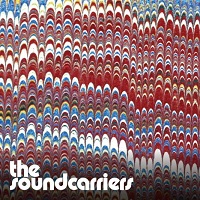 Джаз, Фанк и Рок энд Рол любимая смесь для этих Англичан. Такие они мастаки мешать и смешивать. Гремучие коктейли получаются. Выпивши такой вот коктейль ты оказывается оказываешься в прошлом. В не понятном для тебя времени. Там не ты гонишься за ним а оно за тобой. И по итоге гонки, оно тебя догоняет, одевает наручники и приказывает тебе вернутся назад, в прошлое. Зачем тебе то что будет если есть Я?
Джаз, Фанк и Рок энд Рол любимая смесь для этих Англичан. Такие они мастаки мешать и смешивать. Гремучие коктейли получаются. Выпивши такой вот коктейль ты оказывается оказываешься в прошлом. В не понятном для тебя времени. Там не ты гонишься за ним а оно за тобой. И по итоге гонки, оно тебя догоняет, одевает наручники и приказывает тебе вернутся назад, в прошлое. Зачем тебе то что будет если есть Я?
 Jerry Vivino Приятно удивил своим новым Альбомом....хочу поделится с Вами.
Jerry Vivino Приятно удивил своим новым Альбомом....хочу поделится с Вами. Эфиопская американка с своим вторым, как оказалось, альбомом, очень "разным", понятно что Meklit и джаз любит и эпоху первых Вудстоков знает, и в R'n'b умеет и соулом могёт :) Треки тоже довольно разные по подаче, и нить в альбоме есть и на гитаре сама может и трубач молодчага и басист шотознает, для тех кто знает кто есть Meshell Ndegeocello - обов'язково ознайомитись.
Эфиопская американка с своим вторым, как оказалось, альбомом, очень "разным", понятно что Meklit и джаз любит и эпоху первых Вудстоков знает, и в R'n'b умеет и соулом могёт :) Треки тоже довольно разные по подаче, и нить в альбоме есть и на гитаре сама может и трубач молодчага и басист шотознает, для тех кто знает кто есть Meshell Ndegeocello - обов'язково ознайомитись.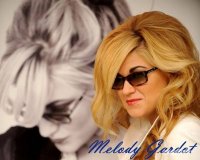 Девушка, с очень непростой и трагичной судьбой, нашла в себе силы не только подняться и жить полноценной жизнью, но и подарить своими песнями надежду отчаявшимся. Это не пафосная, а реальная история и имя у неё мелодичное - Мелоди. Для тех, кто еще не знаком с Гардо, здесь всё и сразу!)
Девушка, с очень непростой и трагичной судьбой, нашла в себе силы не только подняться и жить полноценной жизнью, но и подарить своими песнями надежду отчаявшимся. Это не пафосная, а реальная история и имя у неё мелодичное - Мелоди. Для тех, кто еще не знаком с Гардо, здесь всё и сразу!)


